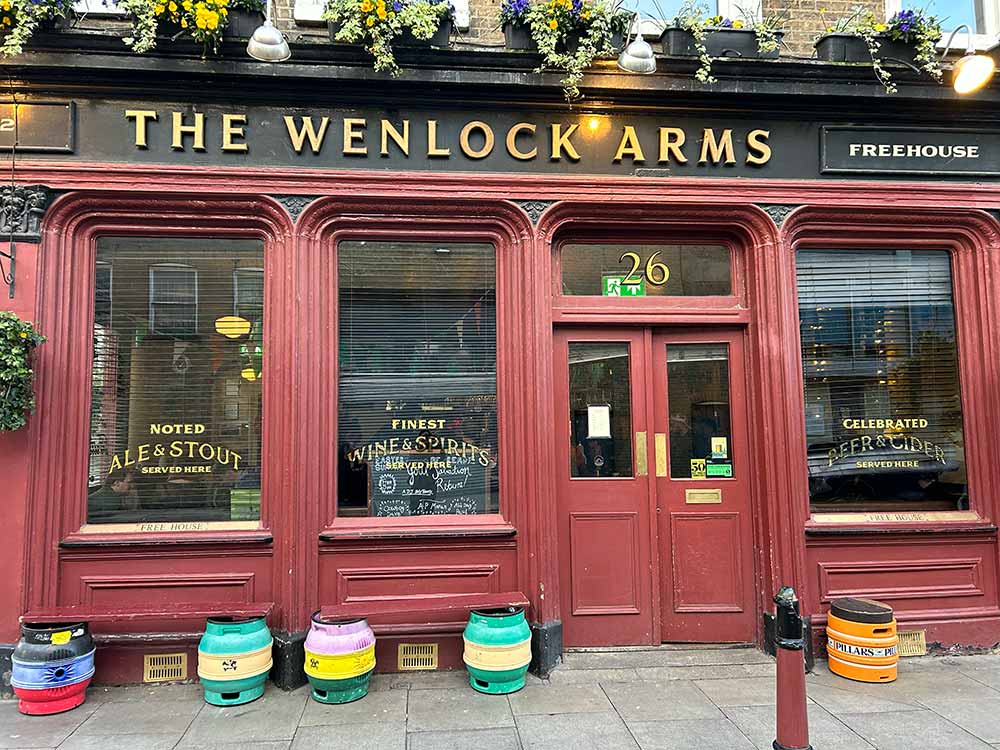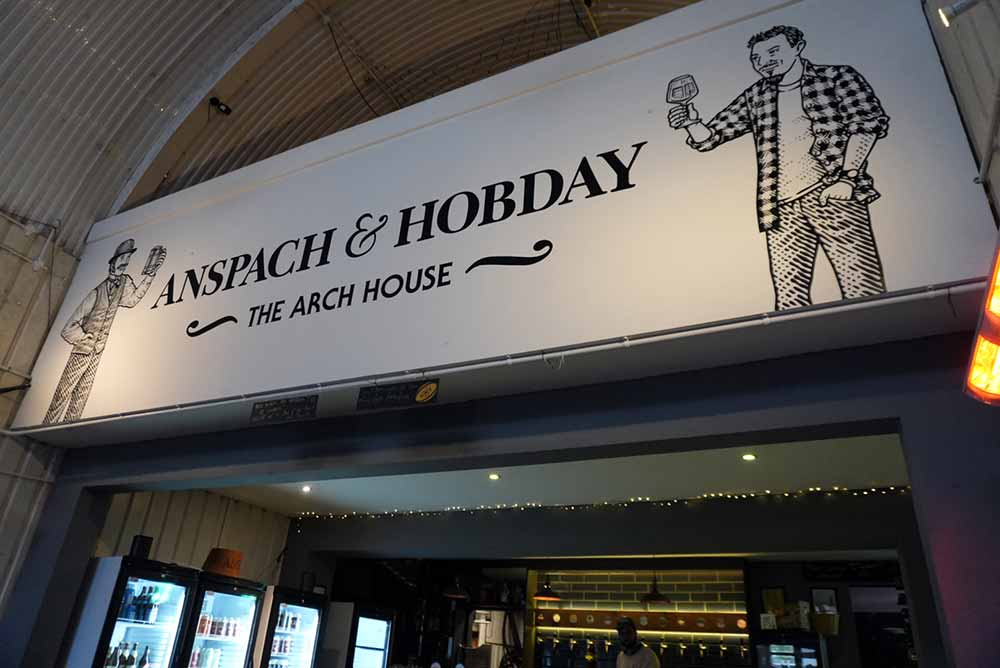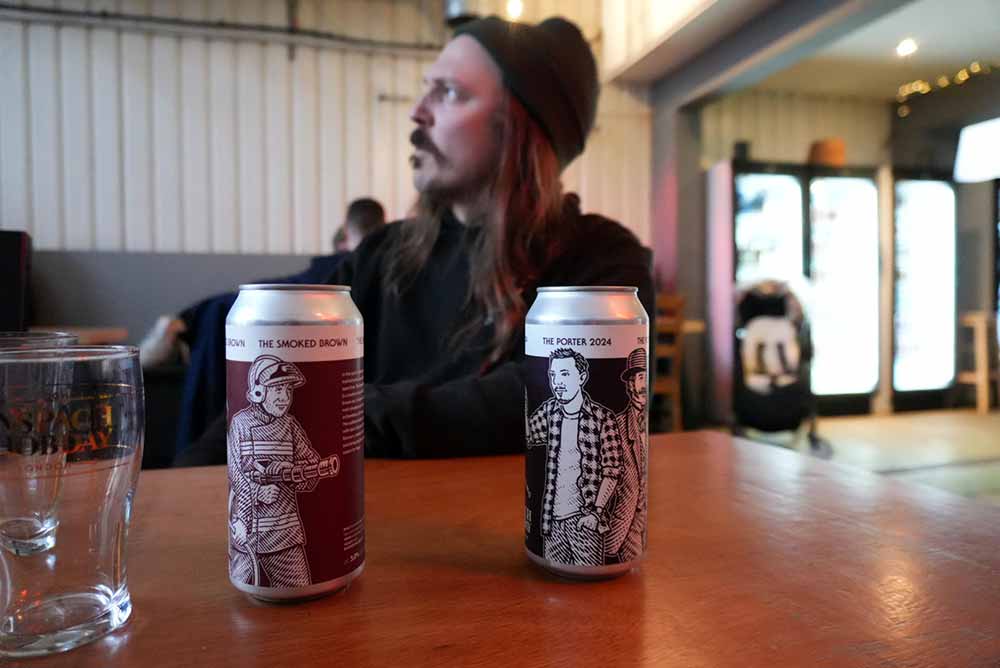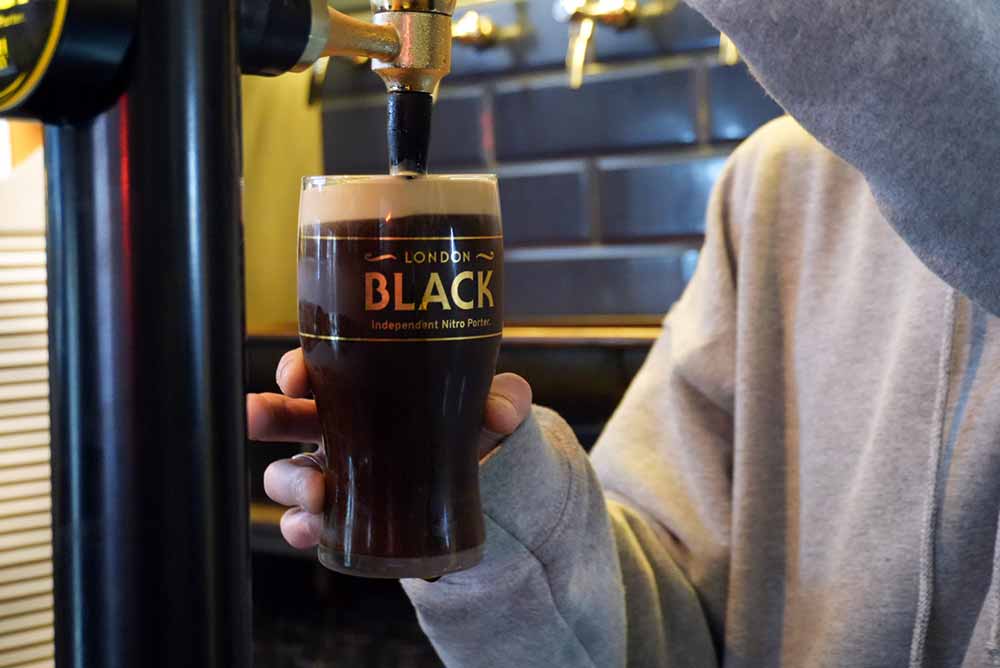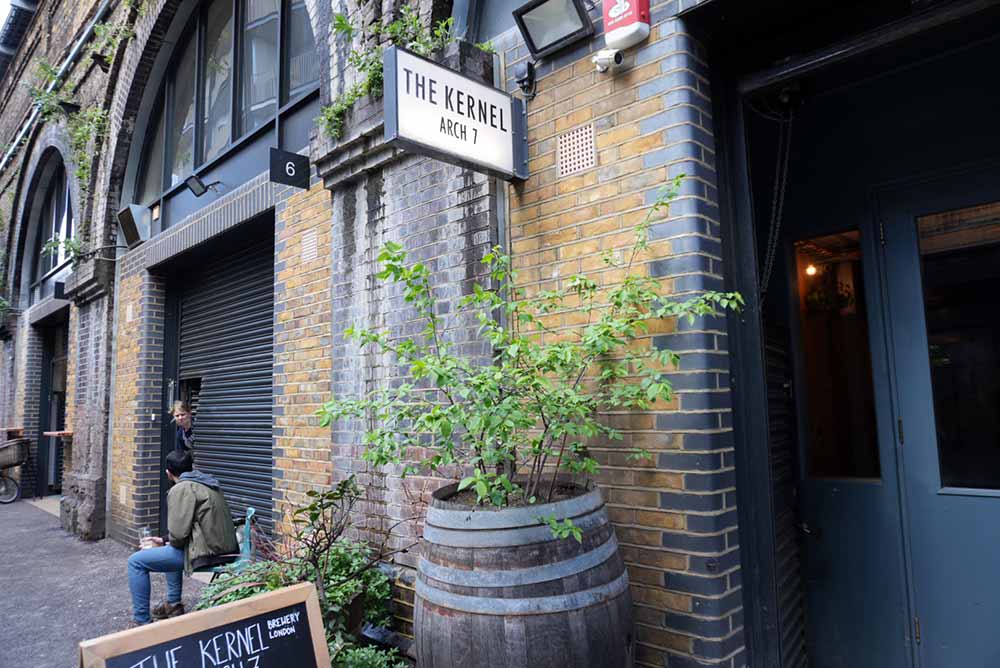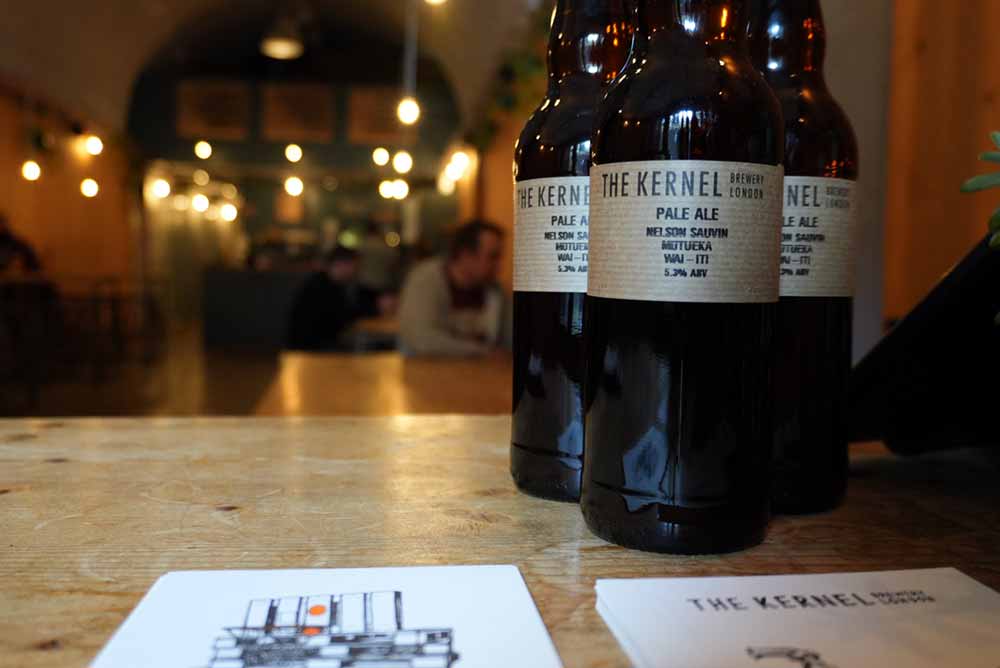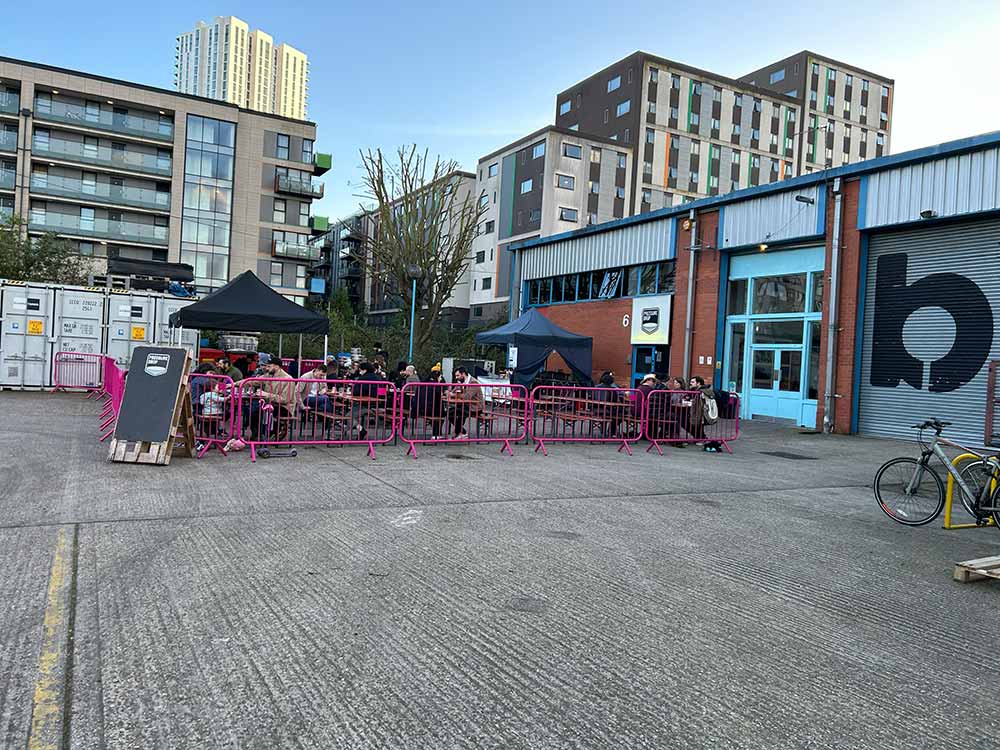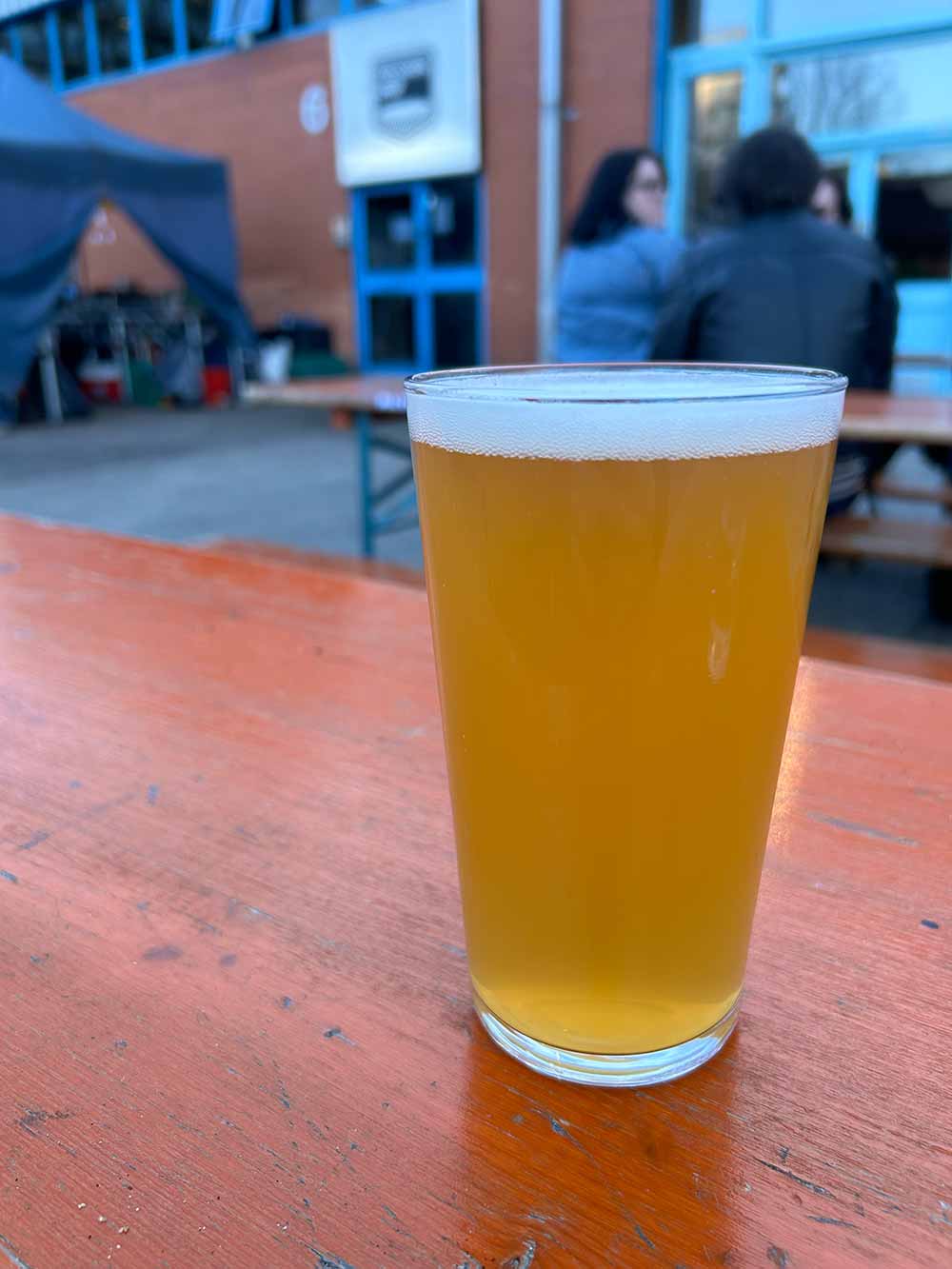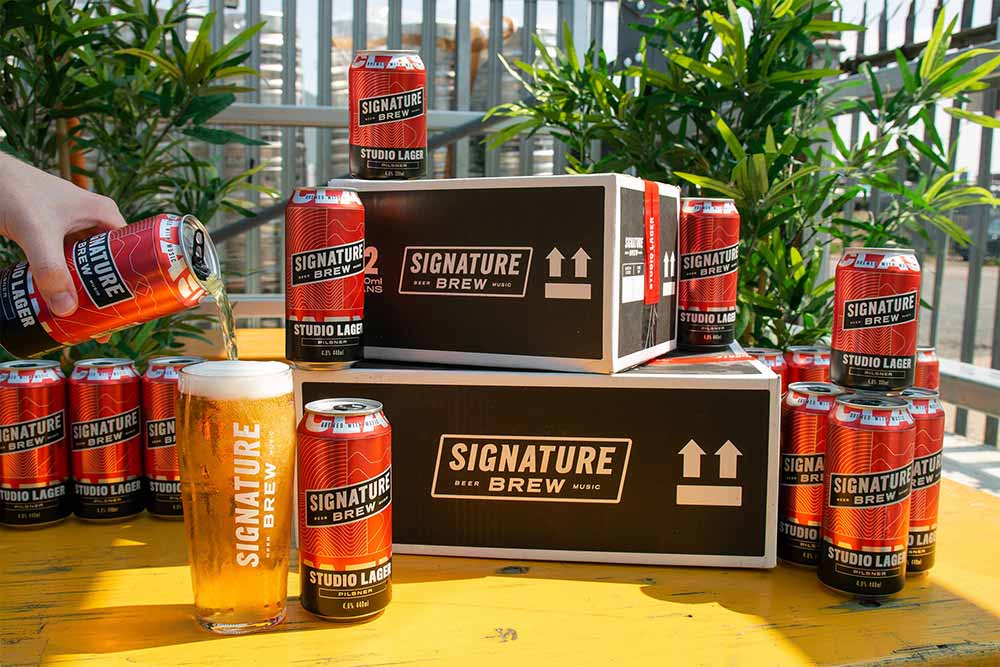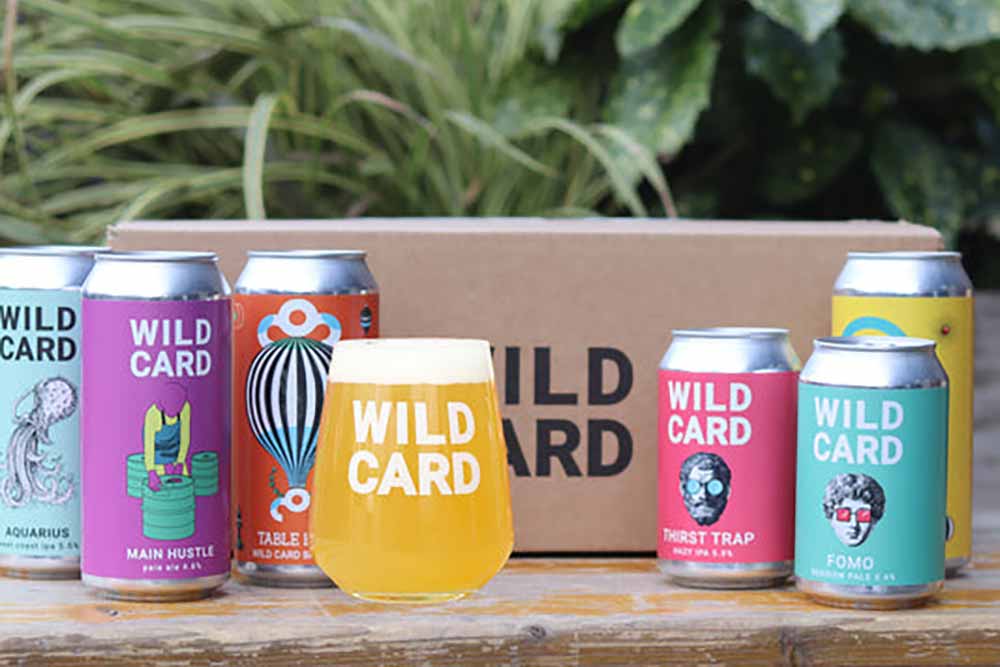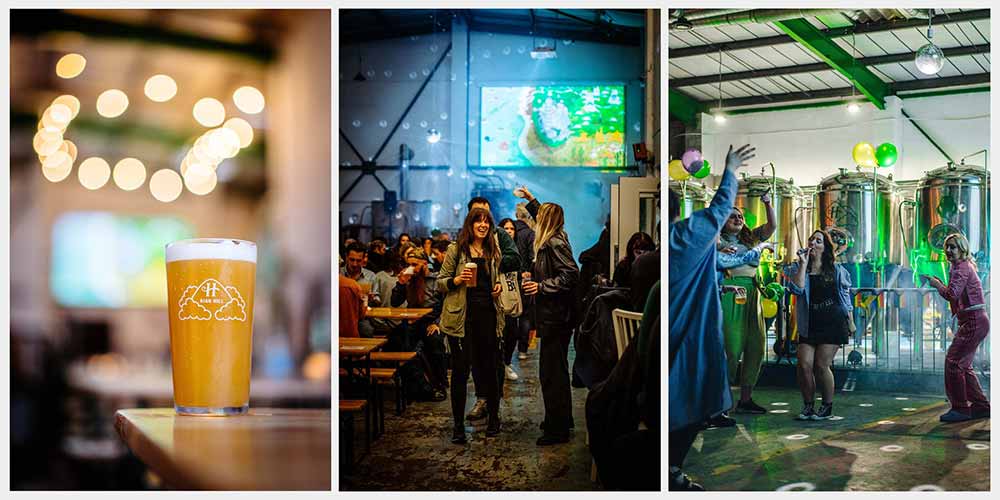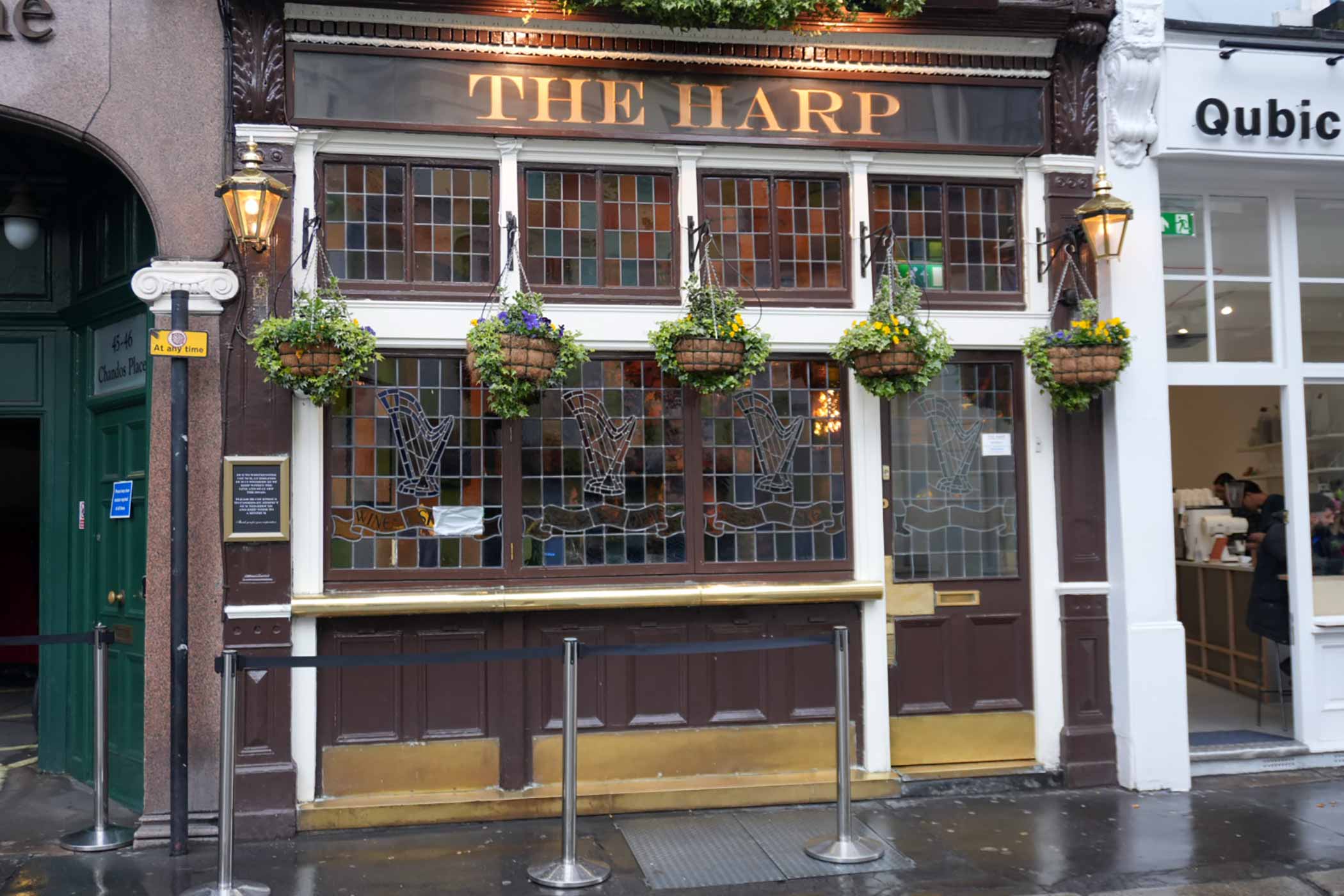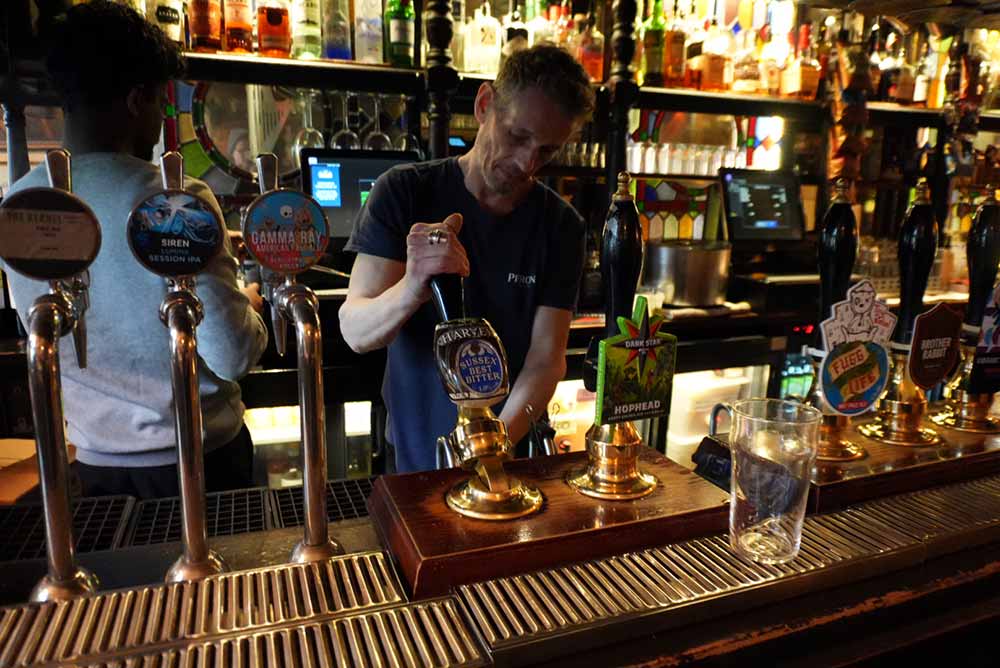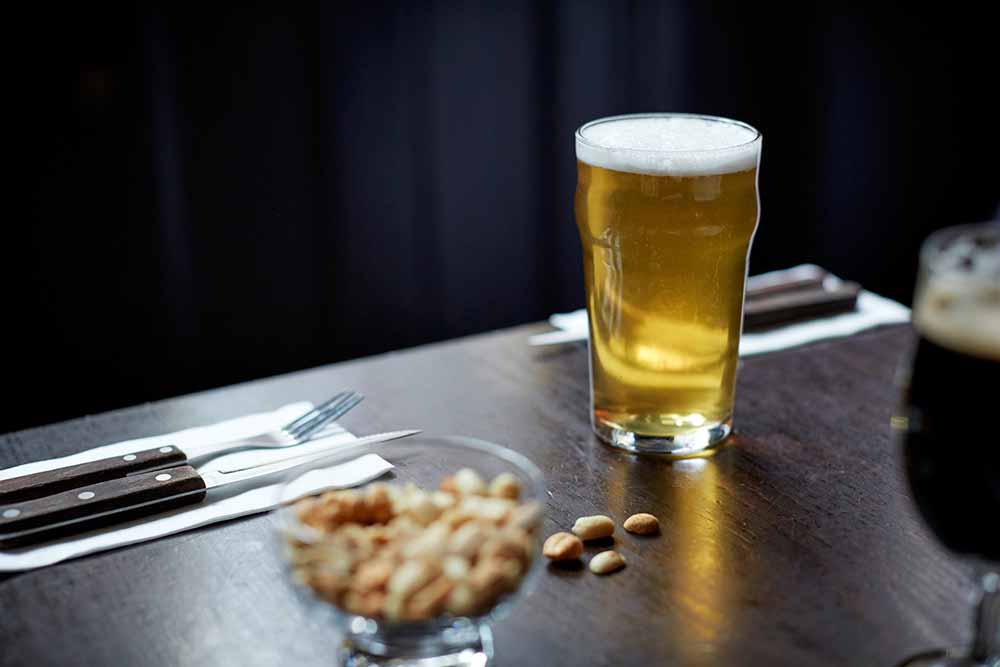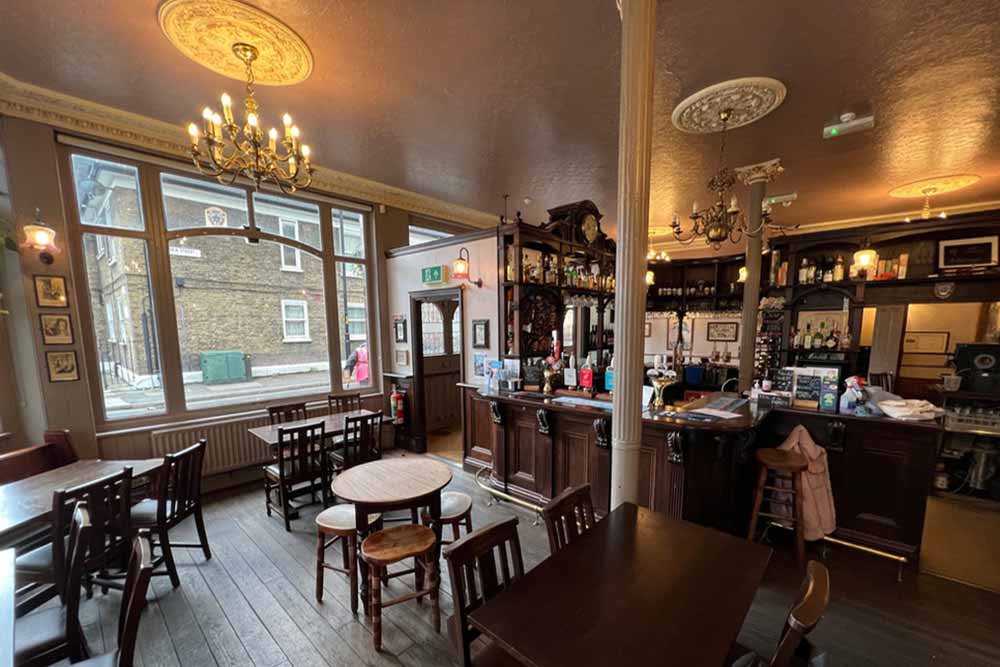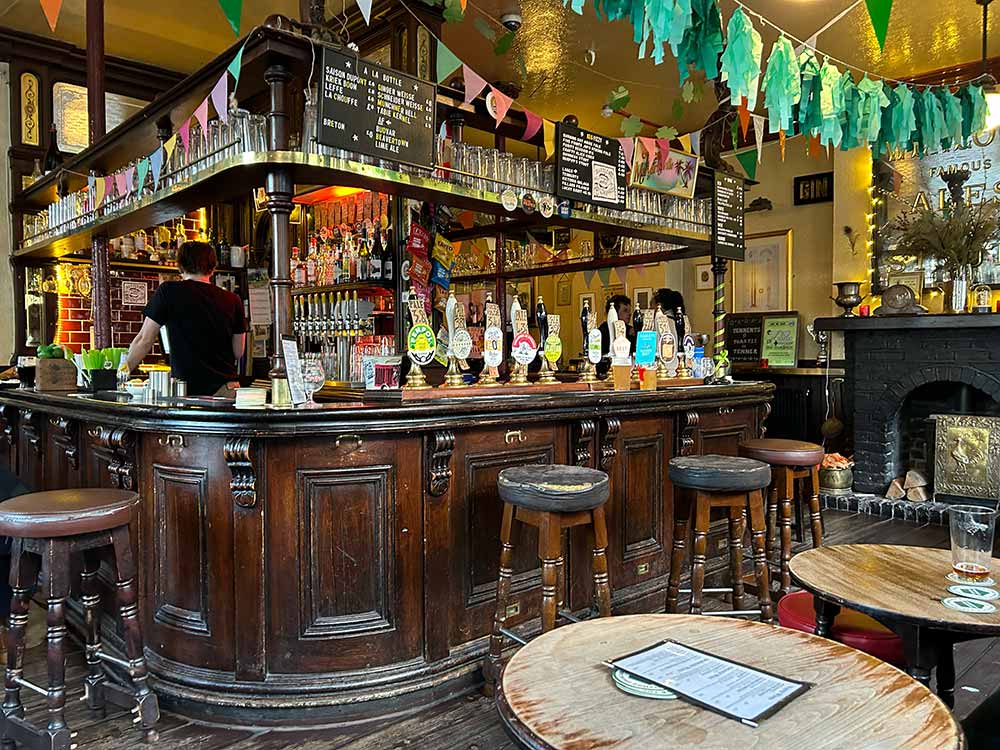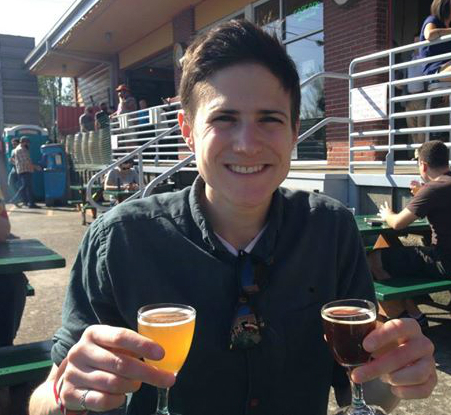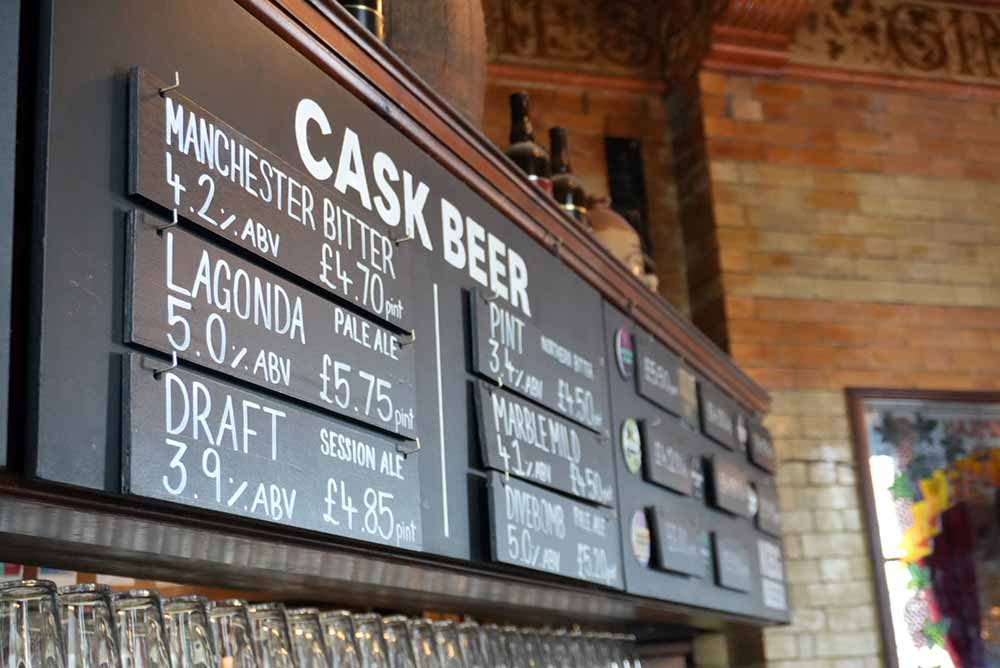Shop
Our Favorite Breweries and Pubs to Visit In London
His Majesty's guide to drinking in England's capital.
Looking for More ???? Travel Guides?
At the beginning of April, I booked myself a one-way ticket to London. I hadn’t been to the U.K. since my freshman year of high school, when my family took me to see all the sites—Westminster Abbey, Big Ben, the Crown Jewels, Stonehenge, the Cotswolds. Now that I think back, my parents planned a pretty incredible trip. The only thing missing at the time: beer!
Of course, as a sixteen-year-old, I couldn’t legally drink anyway. But after my recent trip, my dad shared with me that during our stay in London, he would slip away at the end of the night to a pub down the street. He told me he couldn’t remember anything particularly remarkable about the bar—just that he loved sitting in an English pub, sipping a pint, and reading.
Almost twenty years later, I understand what he means. There is just something almost indescribable about spending an afternoon drinking a 4% ABV mild on cask, sunken into a plush red velvet booth next to a fireplace, reading an Agatha Christie novel, or striking up a conversation about the inevitable doom of the Tottenham Hotspur’s season with a random stranger.
That’s pub culture. Something, as an American, I longed to “research” and understand. So when my friend mentioned she’d be working in London for a week, I jumped at the chance to join her.
And while I could only spend a few days drinking my way across the city, I did my best to chat with old-school pub GMs, new-school craft brewery owners, and as many regulars as I could find in between.
What did I discover? That with over 4,300 pubs located in London alone, finding the “best one” is a little subjective. People staunchly believe in what they call their “local,” the place they love and frequent the most.
“There’s the right pub for the right person out there,” The Harp General Manager Paul Sims explained to me. “It might not be literally the first pub from your house. … You make it your local because it’s where you love to be. You feel a part of it.”
Sims likens it to finding a great Chinese takeaway. “You stick to it, don’t you,” he said. “They cook it exactly how you want it. Exactly the same every time.”
There isn’t any one thing to point out. At one place, like The Wenlock Arms, my first stop of the trip, it could be the fireplace and the vibe. At another, like The Harp, it could be the care they give to an outstanding ten beers on cask and the people who struck up a conversation with you.
“There’s one thing about British pub culture I’m gonna have to try and explain,” a regular at The Harp said to me. “British pub culture is about being able to walk into a pub strangers and leave friends.”
Every single place I went welcomed me. As soon as I opened my mouth, most would ask if I was American before striking up a conversation about gun control, politics, or sports. Over hours and a few cask ales, we’d while away a whole afternoon.
I couldn’t get everywhere I wanted to go, but with the help of some recommendations from locals along with the places I visited, we put together a list of our favorite breweries and pubs to visit in London.
My only regret: I wish I had more time
Hop Culture’s Favorite Breweries to Visit in London
Anspach & Hobday
The Arch House: R118 Druid St, London SE1 2HH, United Kingdom
If there is one beer you must drink during your time in England’s capital, it’s the London Black from Anspach & Hobday. It is hands down one of the best, if not the best, beers I have had in the British city.
Hot take: The London Black nitro porter from Anspach & Hobday is better than any Guinness I’ve ever had (except for maybe one in Tokyo of all places, but that’s another story entirely). And yes, before you get all up in my grill, I realize that Guinness is an Irish dry stout, and this is a porter. But they’re two nitro beers that have fundamentally impacted their hometowns (and, of course, for Guinness, the world).
Over the last couple of years, this little London nitro beer has made serious waves, becoming an icon across the city.
A London brewery through and through, Anspach & Hobday Co-Founders Paul Anspach and Jack Hobday knew when they opened in 2013, they always wanted to brew a porter.
Friends since kindergarten, Anspach and Hobday started homebrewing at university. “We did two IPAs, which were rubbish, and then we brewed a porter,” said Anspach as he placed a frothing, cascading imperial pint of London Black in front of me. “London water is just not suited for making pale beers without any treatment, so we thought, let’s just try something new…and it just clicked.”
As Anspach and I sipped from our pints at the brewery’s taproom on what has become known as the Bermondsey Beer Mile, he told me the recipe hasn’t changed much since then.
They start with straight-up London water. For the base, they use English pale malt with a blend of amber, chocolate, and black malt (the nitro version substitutes the latter for highly kilned and roasted barley) before adding East Kent Goldings and Cascade hops and a very clean American yeast ale strain that “lets everything else come through,” said Anspach. “It’s just super reliable; pretty simple.”
Anspach & Hobday Bartender Courtney Wilson fell in love with this beer as a consumer. “Don’t get me wrong, I absolutely love London Black, but there’s a reason the OG is the number one porter,” he told me as he expertly poured a nitro London Black. “Because it’s the perfect London porter … like it’s engine oil in a glass.”
So, yes, the OG Porter had success. “I think it’s still in, like, Ratebeers top thirty porters in the world,” said Anspach.
But it was missing something.
Remember, the porter started in London. Brewed as a darker, richer version of the English mild brown ale, porter earned its name from the people who drank it most: dock workers (aka “porters”).
“It’s a style which is really, really, really important to London,” Anspach told me. “It’s fundamental that a London brewery should be brewing a porter.”
But Anspach and Hobday felt like London didn’t have one iconic version you could find throughout the city. Unlike, say, an Irish dry stout like Guinness in Ireland or wine in France. “If you went to Bordeaux, there’s no way that you’ll be able to drink anything other than Bordeaux. … If you’re in Champagne, and you ask for a glass of Prosecco, they just show you the door, right?” he asked. “But with beer, we don’t have that. … It’s insane that the most drunk beer in London is an Irish import.”
Anspach & Hobday decided to change that. The brewery’s closing during the pandemic gave them time to reevaluate their business.
They wanted to answer a question: “How do we represent [porters], which are fundamental to who we are as a brewery, but in a way that’s actually commercially viable?”
They saw the success of Guinness and just thought, why not give nitro a go? Despite never having brewed a nitro beer. Despite not even owning a nitro tap!
I mean, the gumption, right!?
The first time they brewed London Black, “we thought it looked just about okay coming out of the tank, so I drove here with a keg of it, converted one of the lines over to nitro, put it on, poured it, and you just saw the magic happen,” Anspach remembered. “No one else was here, but I was like, oh my God, this is amazing; we’ve done it; it’s great!”
When the world opened up again, Anspach & Hobday had a beer “strikingly different to anything we’d done before,” said Anspach.
More than that, they had a solution for many pubs. “They needed a Guinness equivalent. They needed a solid, reliable 4.5% BV porter or stout. We ticked that box,” he said. “We really hit the ground running, and it just kicked off.”
Today, London Black accounts for over seventy percent of Anspach & Hobday’s output. Walk into the taproom on a Friday, and Anspach says eighty percent of the people inside will have London Blacks in front of them.
Incredibly, Anspach & Hobday now directly compete with Guinness.
“You’ve got this David and Goliath fight thing, which is very attractive for people,” said Anspach. “It’s been a pretty wild ride, to be honest,”
The beer packs a punch, holding its own in the nitro ring.
The smoothness and drinkability stood out most from the first sip. But that’s backed up by robust taste.
“A lot of the flavor notes you talk about sound pretty bold,” Anspach shared. “There’s definitely notes of roasted coffee and chocolate…but it’s more like a dark chocolate and then dark fruits like red currants.”
The more Anspach emptied his glass, the more he kept going back to the beer’s balance. “Ultimately, the main thing is it’s very, very balanced, very, very smooth, and very easy to drink.”
To show you how much I agree, I actually ordered a Guinness later in the night at my hotel bar…probably the worst Guinness I’ve ever had.
London Black just made an indelible impression on my mind, and it was hard to go back.
When you visit Anspach & Hobday, you should order the London Black first. Have one. Have two. But don’t sleep on some of Anspach & Hobday’s other offerings, including an excellent Ordinary Bitter and Smoked Brown.
Hit up Anspach & Hobday for a taste of a beer style that defines London.
The Kernel Brewery
Arch 11, Dockley Road Industrial Estate, Dockley Rd, London SE16 3SF, United Kingdom
Many consider The Kernel Founder Evin O’Riordain the godfather of craft beer in London.
Everyone who has started their own brewery has probably passed through the doors of The Kernel at some point.
O’Riordain just does things a certain way—something he picked up as a kid.
Always a maker, O’Riordain won second place for his seventh-grade science project making feta-style cheese. “I still remember the guy who came first,” O’Riordian smiled as he showed me around the brewery’s location on the Bermondsey Beer Mile. “The Golden Ratio, like the Fibonacci series showing petals and various ratios that crop up in so many places in nature,” is the project that won first place.
At the time, O’Riordain’s Irish family had moved to Sudan, following his dad’s career. A dairy scientist and professor of microbiology and dairy technology, O’Riordain’s dad taught dairy science to the Sudanians as part of an Irish aid program.
When O’Riordain moved back to Ireland, cheese followed him.
His classmates included descendants of six different families who all made cheese. “My first girlfriend’s parents made cheese in West Cork,” O’Riordain told me. “There was a whole group of people whose parents made cheese in my class or the one above me.”
After O’Riordain finished college with a degree in Russian history, he moved to London to get his Master’s and start a Ph.D. in literature and philosophy. On a whim, he applied for a job at Neal’s Dairy Yard. “I did lots of name-dropping of all these people whose parents made cheese,” he smiled. “They were like, oh, you know so and so? Yeah, I went out with her daughter!”
While he studied, he worked with cheese. Eventually, Neal’s sent him to New York to help set up a cheese room at a new Whole Foods opening on Houston Street.
O’Riordain started to look at beer differently. Growing up in Ireland, O’Riordain says he drank mostly Guinness, going to pubs more to be social than for the beer. “I suppose I was one of those people who just took beer for granted,” he said. “I probably didn’t even know what the ingredients were. It was just like, here, you drink it.”
In New York, however, after long days setting up the cheese cave, O’Riordain’s coworkers would take him to well-known beer bars like DBA.
He was surprised you could approach beer with the same intentionality as cheese.
“I was basically explaining everything to them about cheese earlier in the day—this cheese comes from this milk, this cow, this recipe, this heritage, this tradition…and they flipped it back and just gave me that information about beer,” he recalled. “I just started wondering, why doesn’t this happen [in London]?”
In particular, the West Coast-style clean, hop-forward ales impressed him.
Beers like Sierra Nevada Pale Ale and Avery Maharaja. “I went from drinking pints of 4% ABV beer to an 11% ABV triple IPA,” he laughed. “You take a mouthful and go, whoa, whoa, whoa!”
When O’Riordain got back to England, he started homebrewing with the idea of opening a brewery. ”I think I’d committed before I started to homebrew,” he smiled.
The Kernel opened in 2009, when there were only about ten breweries in London, five or six of which were brewpubs, according to O’Riordain.
The first beer whe made was a single-hop centennial pale ale to which they added an IPA, an export India porter, an export stout, and an imperial brown stout.
Today, O’Riordain says you’ll also find a pale ale on, often featuring a different hop. ”The way it works is that whoever’s brewing gets to pick the hops,” he says. “I do get to pick the hops that go in the fridge, though.” When I visited, I tried a pale ale with Talus, a bit of divisive hop.
“I’m divided about it myself,” said O’Riordain. “Sometimes I think it’s amazing, and sometimes I go, whoa, you’re a no.”
The hop works well here, giving off a subtle coconut and citrus tone.
The imperial brown stout O’Riordain poured me came from a self-published book called “Old British Beers and How to Make Them,” by the Durden Park Beer Circle, a homebrew club on the outskirts of London that investigated the practical history of British brewing styles.
“London is built on a brewing tradition of dark beers,” said O’Riordain. “So this is us trying to come up with what it means to be in London.”
O’Riordain points to the water being perfect for dark beers. “You don’t have to faff with anything.” Add all brown malts to give the porter that characteristic leathery, tarry, tobacco note, and you have a beer that “just having a little sip with you in the morning is like, wow, that’s amazing,” said O’Riordain.
O’Riordain also points out that they bottle condition every beer, a defining characteristic. “I think you feel that life in our beers,” he says.
Despite the brewery’s success, you’ll always find a humbleness in O’Riordain and The Kernel.
O’Riordain names all the beers just after styles. “I don’t think beer should be personified with a name,” he said.
All The Kernel’s beer gets bottled (mostly, O’Riordain told me, because he didn’t know how to keg beer at the time) with a simple brown paper label. “That’s how I used to label when I homebrewed,” he explained matter-of-factly as he showed me a dusty shelf in the back of the brewery they playfully call the “Shelf of Purgatory or Strange Things” full of beers for aging like gueuze and lambic. “It’s all the things that are really important and good, and then we put them on here and never drink them.”
You also won’t find any other information on the labels. “They don’t have tasting notes because I don’t want to tell people what to think,” he said. “It’s also supposed to say we’re putting all the effort into the beer. We’re not putting all the effort into the label, copy, and marketing spiel.”
Ironically, The Kernel’s simply labeled bottles now stick out on the shelf.
These immutable principles have defined The Kernel’s reputation. “I like to think my ethics are relatively clear through how I do things,” O’Riordain says softly. “Hopefully, that means something to certain people.”
Recently, The Kernel went down to a four-day workweek to give its employees a better work-life balance. And O’Riordain has surrounded himself with similar ethically minded businesses in the railway arches around him.
“We have our beer family and our community of people,” he told me.
You can’t visit London without stopping at this institution.
Pressure Drop Brewing
Unit 6, Lockwood Industrial Park, Mill Mead Rd, London N17 9QP, United Kingdom
The prince and princess of pale ales in London, Pressure Drop makes one of the beers that defined the nascent London craft beer scene in the mid-2010s—Pale Fire. Located in an industrial yard in Tottenham Hale that includes Beavertown, Pressure Drop’s taproom opened in 2016, giving East Londoners crushable, hop-forward beers in a taproom popping up in the brewery space.
Pale Fire, in particular, crushes pretty hard as a hazy 4.8% pale ale. Consider Pale Fire in England like the Sierra Nevada Pale Ale in the U.S.; it’s the pale ale that so many breweries try to emulate.
We can attest to this beer’s juicy loveability. After catching a Tottenham game at N17, we strolled through the marshes of Walthamstow Wetlands to Pressure Drop’s industrial taproom just to snag a pint of Pale Fire.
If words like juicy and hazy aren’t in your vocabulary, Pressure Drop might honestly not be the place for you. But they do have a couple of lagers and dark beers. Really, though, you go to Pressure Drop for the dewey drafts.
Don’t skip ordering the legendary local Yard Sale Pizza for delivery directly to the brewery or grabbing food from one of the pop-up vendors rotating through the taproom.
Signature Brew
Unit 15, Blackhorse Ln, London E17 5QJ, United Kingdom
In 2011, Tom Bott and Sam McGregor founded Signature Brew as a brewery on a mission to unite people through incredible beer and great music. Bott and McGregor wanted to work with different bands to solve the problem of drinking terrible beers at gigs and music festivals.
Flagship beers like Studio Lager, Roadie IPA, and Backstage IPA ring true. But Bott and McGregor truly shine, blending the boundaries between music and beer, collabing with artists worldwide, such as Hot Chip, alt-J, Mastodon, IDLES, The Darkness, and many more.
The brewery’s unique perspective helped it win SIBA’s prestigious Brewery of the Year Award twice (2018 and 2021)—something no other brewery in the U.K. has done.
Do you love music? Do you love beer?
Signature Brew is a must-stop for you.
Wild Card Brewery
2 Lockwood Way, London E17 5RB, United Kingdom
Barrel Store: Ravenswood Industrial Estate, Shernhall St, London E17 9HQ, United Kingdom
The award-winning Wild Card Brewery started as a “cuckoo” brewery, one that borrowed other brewer’s equipment to brew. Eventually, the brewery got a start-up loan from the government to start its own six-barrel taproom.
Powered by head brewer Jaega Wise, Wild Card makes a range of five core beers. For instance, the simply named India Pale Ale, a bronze winner at SIBA in 2019; Lager; a Czech pilsner made with Hallertau Blanc hops; and Pale Ale.
Hackney Brewery
Unit 10, Lockwood Way, London E17 5RB, United Kingdom
Founded in 2011, Hackney Brewery made a name for itself by brewing top-notch hop-forward ales, juicy hazies, pitch-perfect lagers, and a particularly award-winning peach and basil sour called Millions of Peaches.
A couple of years ago, when the brewery celebrated its decade anniversary, they opened their first taproom, a new 7,500-sq-ft beer hall and garden called High Hill.
Today, you can still find Hackney making excellent ales with a modern U.S. twist. Such as Kapow!, a juicy, dry-hopped pale ale with Chinook, Amarillo, and Ekuanot hops. Or Boogie Van, an American DDH IPA featuring Mosaic, Azacca, and Ekuanot.
Plus, Hackney has collabed with pretty much every big-name brewery on both sides of the pond, including Evil Twin, KCBC, Finback, Pressure Drop, Left Hand, Brick Brewery, The Virginia Beer Co, Wild East, Wild Card, Polly’s Brew Co, and more.
Hop Culture’s Favorite Pubs to Visit in London
Let’s preface this by saying that we could spend years in London and still not visit all the incredible pubs. Everyone has their local (favorite). Everyone has their opinion on the definitive “best.” Please feel free to politely share your fave with us at [email protected]. We’d always love to add to the piece and put new suggestions on our list for the next time we visit.
Below, you’ll find a list of places where we loved spending time while in London, mixed with a few excellent recommendations from experts in the industry.
The Harp
47 Chandos Pl, London WC2N 4HS, United Kingdom
The first and only London pub to win CAMRA’s National Pub of the Year, The Harp is somewhat of an institution around the city. Technically, the pub’s history stretches back two hundred and fifty years.
If only the walls could talk. For now, The Harp’s general manager, Paul Sims, fills us in on the pub’s lore.
“Reputedly, J.K. Rowling used to work just up the road, and she frequented here quite a lot,” shared Sims, who took over as custodian (his words) seven years ago. “She probably penned quite a bit of her Harry Potter [here].”
In 2014, Fuller’s Brewery took over The Harp, which sells predominantly cask beer.
“To have ten hand pulls going constantly—seven days a week—it’s unusual,” explained Sims, noting they’ll always have some permanent lines like London Pride, Harvey’s Sussex Bitter, and Dark Star Hophead, but they’ll also feature guest lines, which are “a bit of grab it whilst you can.”
At the Harp, you’ll find everything from dark porters and stouts to golden ales, bitters, and milds pouring 365 days out of the year. “Generally, I’ve always got a dark. We try to have a golden or a blonde, a red—what we call an amber-red ale,” he explained.
But it’s not only Harry Potter and cask beer that attract people. What truly makes The Harp outstanding is their care and attention to detail. Located on a back street away from a main thoroughfare, it’s not like people just wander into The Harp. But if you Google “best pub in London,” The Harp almost always comes up.
“Reputation is everything,” said Sims, who lives right above the pub, meaning he can pop down whenever needed. “We maintain our beer very highly because quality is everything to us. I think reputation is a strong thing that has made us as successful as we are.”
The atmosphere also draws people in time and time again.” What I usually say is we’re either busy or really busy,” said Sims. “People still want to come to us because we’re a nice, cozy pub.”
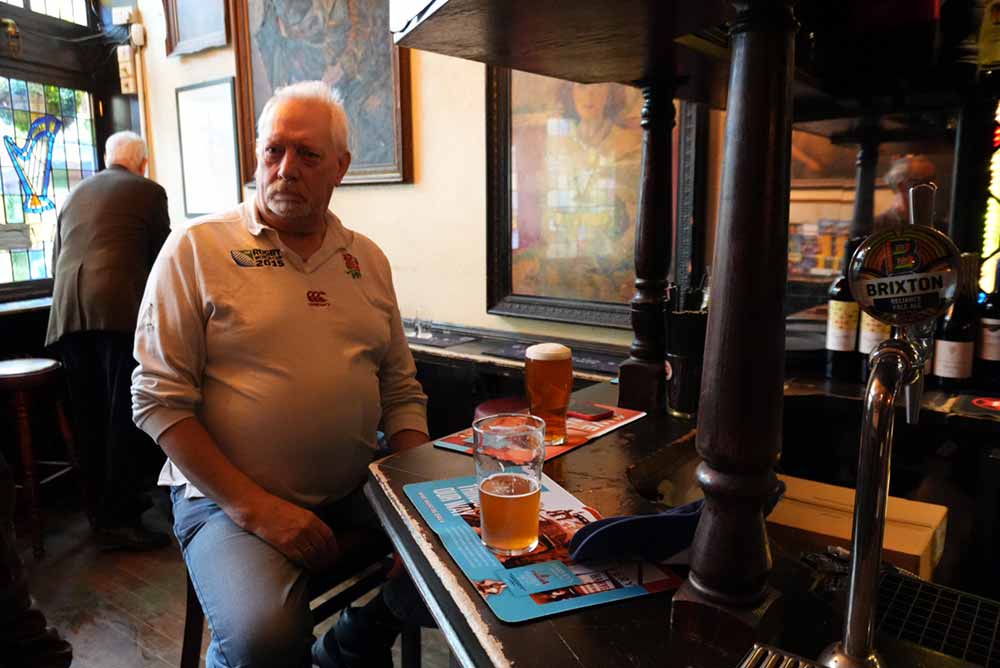
One of the regulars at The Harp, Stephen Hall | Photography courtesy of Grace Lee-Weitz | Hop Culture
Sims describes The Harp as a stately home. “Nothing ever changes. People come back after, you know, ten years or whatever; they might have emigrated to Australia, but they’ve come back to see the kids. They come back, and they go, God, this place hasn’t changed,” he explained. “That’s what they love.”
Stephen Hall would be considered a regular at The Harp. Sims told me he comes in at least three to four times a week—sometimes five. Perched atop his stool right at the bar, sporting a long white ponytail, he greeted me warmly when I walked in, joking about the rain.
When Sims poured me a half-pint of Harvery’s Sussex Best, he interjected, “I can’t see any problems with that one, apart from the fact that it’s in a half glass!”
Hall, who calls Harvey’s a “quintessential English beer,” comes from the Northwest and has been coming to The Harp for the last fifteen years.
“As long as the American pale ale flows, he’s happy!” said Sims.
Hall loves The Harp for reasons he can’t even put into words. “Honestly, it’s one of those things; if you bottle it, you’d make a fortune,” he explained to me jovially, noting that over the last twenty-five years, most of his close friends he’s met in pubs like The Harp. “It’s that indefinable something, isn’t it?”
Matt Miller and Kelly Donald, friends since attending Westminster University, meet up for drinks about four times a year. “The Harp is one of the top,” said Miller. “You come in here; as a rule, it is jam-packed.”
Miller appreciates the ambiance. “We walked in here and must have spoken to about seven or eight people before we sat down,” he told me. “That’s pub culture, isn’t it?” Plus, he loves the beer. Together, according to Miller, “that’s ninety percent of the checklist” for a great pub.
While drinking my half-pint of Harvey’s best bitter and Hall his pint of Golden Glow, we had a pretty intense discussion about the Electoral College and gun control. We even touched on Prince and, of course, “the bloody weather, which is consistently crap,” he almost shouted.
Before I knew it, three hours had passed. And I suppose that’s what an authentic British pub is all about, no? Walk in strangers, and after a few beers, leave friends.
The Old Fountain
3 Baldwin St, London EC1V 9NU, United Kingdom
A chalkboard sign on the sidewalk says something like “best cask in London,” and an arrow points you down a cobblestone street.
Walk less than a block, and you’ll stumble upon the red-tiled facade with hanging flowers and an ivy-covered balcony creeping onto a white and gold sign that says “Old Fountain.”
When my friend and I breezed into the pub off the Old Street tube station on a Thursday at 10 p.m., the place was packed! So, while we couldn’t find a seat and had to wiggle our way into ordering from one of the five beer engines (and many more keg taps), we can see why this no-frills pub is so popular.
The atmosphere pulsed with groups of friends sharing shots and pints. Discarded birthday cards and cake crumbs dotted crowded booths. I’m not exactly sure how the vibe changes here during the day, but if you’re looking for a good time at night, The Old Fountain won’t disappoint.
Bonus Tip: Walk to the back and find a curling stairway that leads to a rooftop!
The Southampton Arms
139 Highgate Rd, London NW5 1LE, United Kingdom
Two words: community pub. Here, you’ll find folks of all ages enjoying everything from beers on cask to craft beer to cider, award-winning pork pies, and hot roast pork buns; drinkers from London and farther afield, working class and hardly working.
You’ll hear all sorts of conversations from Arsenal to politics.
Pellicle Founder Matt Curtis highly suggested we stop by this haunt. We honestly didn’t have time to, so we’d rather let the Pellicle describe the charm of this cheeky little boozer to you.
Sounds like an incredible place worthy of your time.
The Royal Oak
44 Tabard St, London SE1 4JU, United Kingdom
Another of Hall’s haunts (our favorite regular from The Harp above), The Royal Oak won CAMRA’s South East London Pub of the Year in 2023.
The bricked Victorian pub in Borough, London, has stayed true to its roots, even while the neighborhood has given way to skyrises around it.
With plenty of Harvey’s (and other beers) on cask, The Royal Oak refuses to change with the times. Just like a solid oak tree.
And that’s what people love so much about it.
Other accolades include earning a spot on the Daily Telegraph’s 2010 list of U.K.’s top ten pubs, one on the Evening Standard’s Top 50 pubs in London, and Londonist’s best pubs in Borough list.
The Wenlock Arms
26 Wenlock Rd, London N1 7TA, United Kingdom
Only blocks away from my hotel in London, The Wenlock Arms actually ended up being my first stop of the trip, so I saved it for last because it was one of my personal favorites.
The neighborhood watering hole has everything you could want. Nestled into a side street a few blocks away from the busy city road, the pub wasn’t packed on a Wednesday afternoon but comfortably cozy.
In the corner, an older man with grey hair and a white beard sat reading the paper while groups of friends tucked into booths munched bags of crisps and drank cider. My friend and I ordered a Penpol Verdant Pale Ale and Harvey’s Sussex Best best bitter on cask. But with over ten hand pulls, you’ll find whatever warm, flat, delicious beer you want.
The longer we sat there, the busier the pub became; as the after-work crowd piled in, friends recognized each other and high-fived, and the noise level grew. And yet, that one man still sat in the corner, quietly finishing his pint and reading.
Now that’s a proper pub.
Oh, did we mention there was a fireplace?

